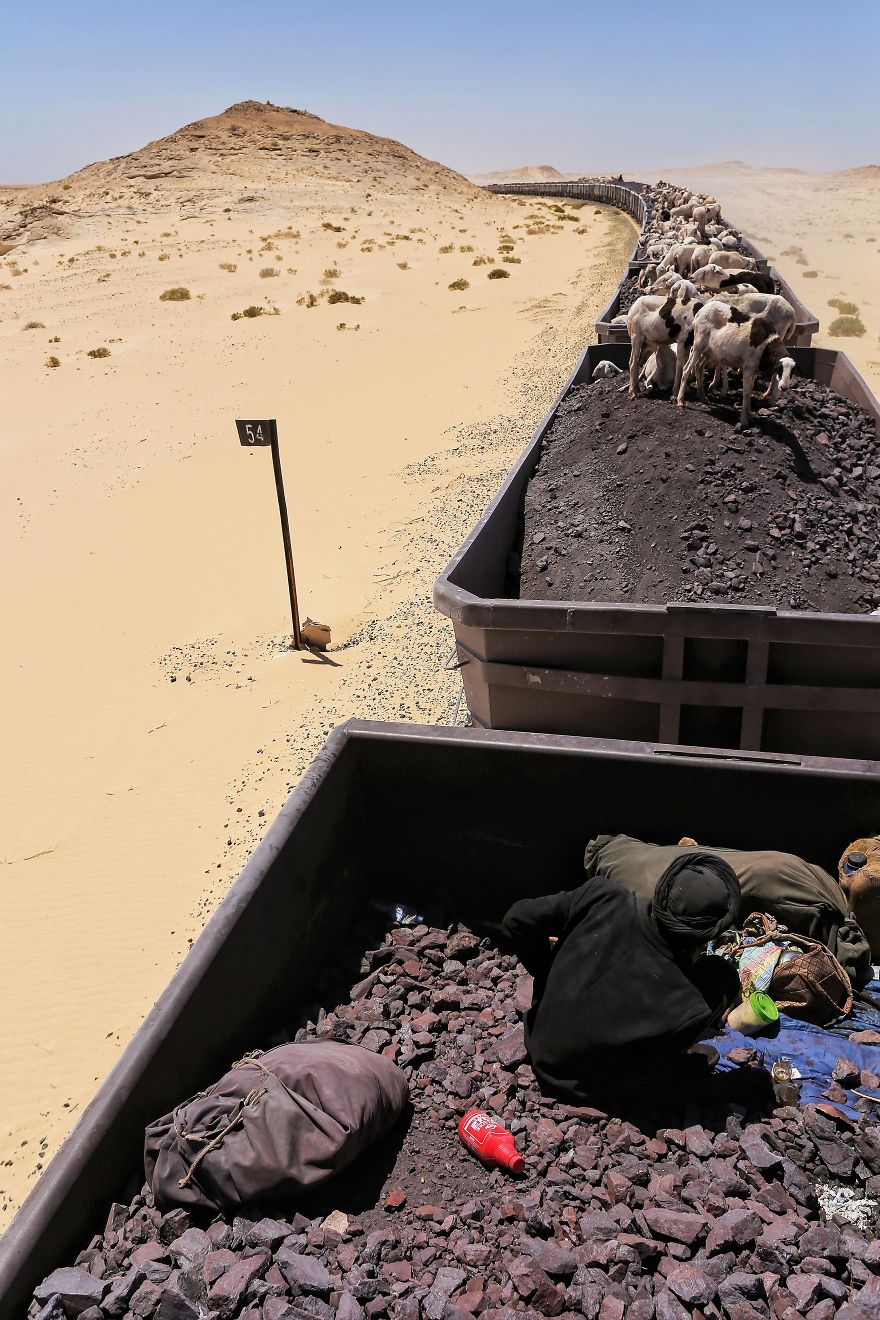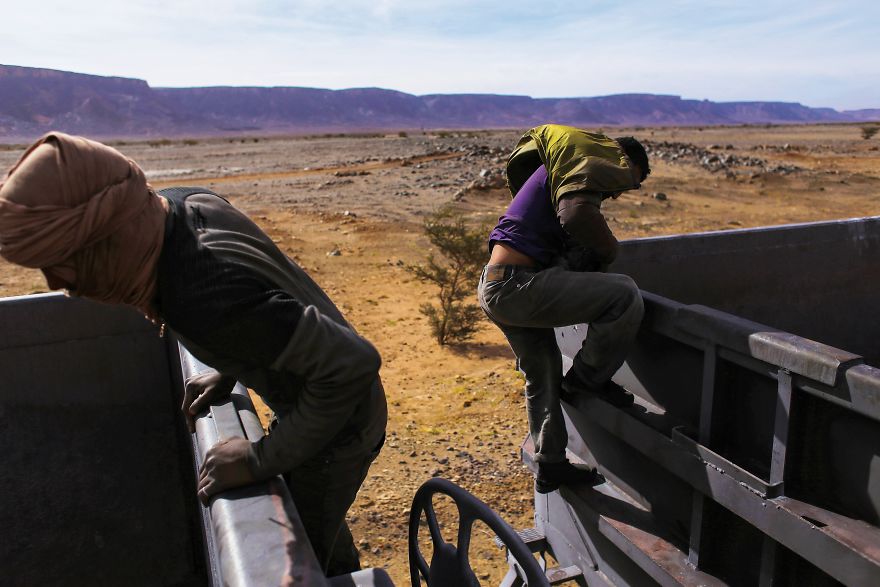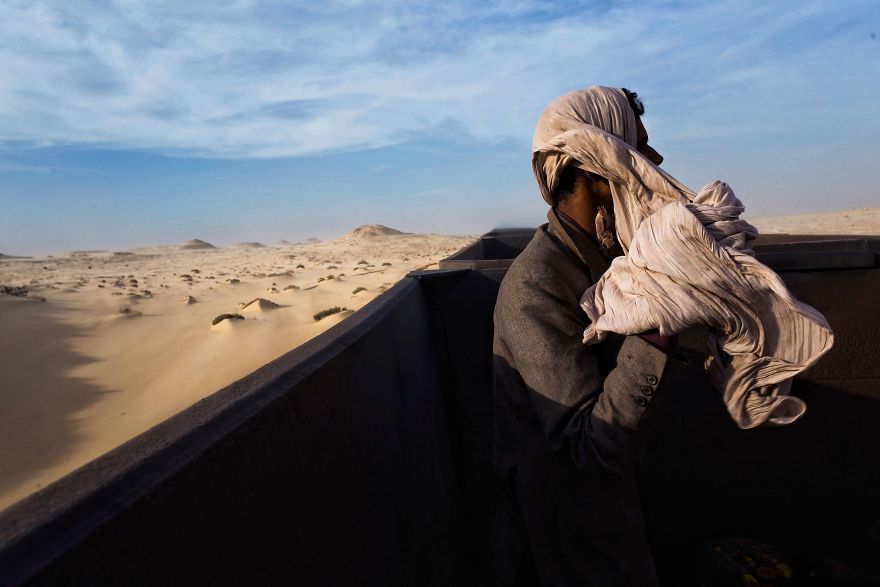
Freight Train Hopping In Mauritania: 4000 Kilometers In A Cargo Carriage With Local Shepherds And Their Sheep
In the spring of 2016, I traveled to the Sahara desert to ride the legendary Mauritanian iron ore train. At a length of 2.5 kilometers, the train is said to be one of the longest in the world. The railway is Mauritania’s economical artery and a relict of her colonial past. Built in the 60’s by the French and later taken over by SNIM (National mining and industrial company), it has been operating for almost half a century, tirelessly transporting iron ore from the mines of Zouerat to the port of Nouadhibou.
As there are no road connections between the two cities, people, their goods and cattle are allowed to travel for free inside the train’s cargo carriages. For a group of Mauritanian men, transporting food products and sheep is their full-time job. They travel between the mines and the port several times a week, enduring a tough 16-hour long journey through sandstorms, extremely hot days and freezing cold nights.
More info: Instagram
The train leaves the mines of Zouerte loaded with iron ore and sheep
The 700-kilometer train journey between Zouerat and Nouadhibou can last anything between 12 and 20 hours
A young shepherd keeps a close eye on his animals. Every time a sheep gets too close to the edge, he throws a stone at it
Headscarves provide some protection from wind, sand and harsh sunlight. It also looks pretty “badass”
A bread seller watches the train as it approaches the village of Choum
A young shepherd tries to light up a cigarette resting on 80 tones of iron ore
My co-passengers are entertaining themselves by climbing from one carriage to the other while the train is on the move at full speed
Skeletons of abandoned vehicles and piles of scrap metal litter the desert landscape
Pick-up trucks race along the train until it grinds to a halt at its final station in Zouerat
Hundreds of goats are being caught by their back legs and thrown into the carriages like sacks of potatoes
One live goat sells for around 100 euros in Nouadhibou
The train track is stretched along the Western Sahara border which is full of landmines after the Western Sahara – Morocco conflict
My co-passengers pray as the train travels east
Style as rough as the journey itself
People wait for the train at Choum station
Transporting cattle and other goods between Nouadhibou and Zouerat is Said’s full-time job
Wind, sand and iron ore dust are the most persistent travel companions
During a month’s stay in Mauritania I rode the train 8 times and covered the total distance of 4000 kilometers
14Kviews
Share on FacebookThese are pretty cool. The goats might not really enjoy the experience XD
What is disturbing is that some of the dark-skinned people in the pictures may be slaves. Some of the light skinned ones might be their masters, especially those who cover their faces with blue, as a sign of dominant social class. Slavery does still exist in Mauritania and anti-slavery activists can end up in prison there.
No slaves (or slave masters) in the pictures, trust me. I spent dozens of hours with these guys. They are just ordinary folk living in the same village and working hard on the train. But you are right, slavery still exists in Mauritania.
Load More Replies...These are pretty cool. The goats might not really enjoy the experience XD
What is disturbing is that some of the dark-skinned people in the pictures may be slaves. Some of the light skinned ones might be their masters, especially those who cover their faces with blue, as a sign of dominant social class. Slavery does still exist in Mauritania and anti-slavery activists can end up in prison there.
No slaves (or slave masters) in the pictures, trust me. I spent dozens of hours with these guys. They are just ordinary folk living in the same village and working hard on the train. But you are right, slavery still exists in Mauritania.
Load More Replies...
 Dark Mode
Dark Mode 

 No fees, cancel anytime
No fees, cancel anytime 



































































102
11